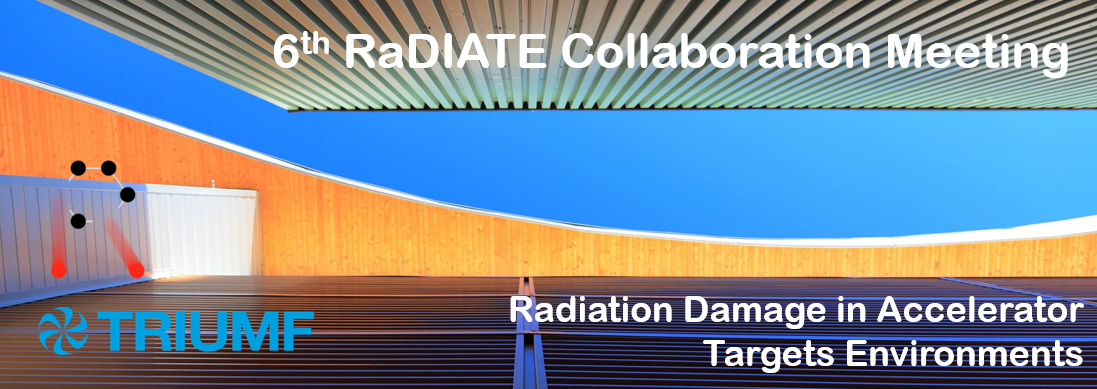Speaker
Mrs
Inbal Gavish Segev
(Soreq)
Description
Proton irradiation damage is a common problem in structural materials at accelerators and nuclear fusion reactors. This damage may result in the degradation of the mechanical properties of structural materials and jeopardize the safe operation of nuclear facilities.
Tungsten and tungsten alloys are utilized as building blocks of nuclear facilities, due to their excellent mechanical and thermal properties. Nevertheless, tungsten may also suffer from blister erosion due to proton irradiation. The choice of tungsten as material for the divertor in ITER (future thermal reactor) led to an increase in the number of studies on blister formation and hydrogen retention in tungsten in the last two decades.
Most of the studies focus on low energy protons, up to several keV’s and on hydrogen plasma interaction with tungsten. Irradiation by low energy protons is characterized by shallow implantation depths, high sputtering yield and low irradiation temperatures.
In spite of the extensive research carried out on the evolved damage due to irradiation by keV protons\deuterium ions, the mechanism of blisters formation and growth in tungsten remains not well understood. In contrast, under MeV proton irradiation the evolving damage should differ from that from keV protons due to deeper penetration depths, lower sputtering and higher irradiation temperatures. These differences are expected to affect the blister formation and growth processes and their analysis should contribute to improving our understanding.
In this study, we investigated the evolution of irradiation damage in tungsten by high energy protons (MeV’s) at several fluxes and temperatures, to obtain a better understanding of the mechanism of blister formation and growth during irradiation. A cooled target cell was designed and built to allow ambient temperature irradiation experiments.
Single and polycrystalline tungsten samples were irradiated with 2.2 MeV protons at Soreq Applied Research Accelerator Facility (SARAF). Hydrogen blisters were obtained for both single crystal and polycrystalline samples. Blisters were formed at doses of the order of 1017 protons/cm2, which are below the reported keV critical threshold for blister formation. Large, well-developed blisters are observed, indicating that for MeV range protons the critical threshold is at least an order of magnitude lower than the lowest value reported previously. The effect of temperature and flux on the critical formation dose for blisters and on their dimensions was studied. It was found that for single crystals, the critical formation dose is one order of magnitude higher than for polycrystalline tungsten at high-temperature irradiation conditions. Upon reducing the irradiation temperature to ambient, the critical dose for the formation of blisters in single crystals was reduced by a factor of three, in contrast to polycrystalline tungsten where there was no significant change with temperature; thus indicating the role of grain boundaries in blister formation. Larger blisters were obtained in single crystals than in polycrystalline tungsten at ambient temperature conditions, identifying the grain boundaries as a preferential additional hydrogen trap. The height to area ratio of the blisters is found to be strongly temperature dependent and only weakly dependent on irradiation flux for both single and polycrystalline samples.
The morphology of the irradiated samples was observed by examining cross-sections of blisters obtained by the use of a focused ion beam (FIB). The thickness of the blister cap was found to be in good agreement with the irradiating protons stopping range, regardless of sample structure, temperature or total dose. Increased curvature of the surfaces was observed with increased temperature for polycrystalline and single crystal blisters and was interpreted as increased ductility of the blister growth process. The ductility is more substantial in single crystal blisters, pointing to the role of grain boundaries in blisters growth mechanism. The cap of one blister was removed, exposing the inner fracture surface of a blister and supporting the validity of the cross-sectional observations.
The mechanical properties in the vicinity of a blister formed in a single crystal sample were characterized by nano-indentation. The hardness near the irradiated surface was found to increase both in the vicinity of the blister and beyond. This observation suggests that the elevation of the blister cap does not cause significant strain hardening. For the blister cap, the hardness was found to increase with increasing depth from the irradiated surface, correlating with increased irradiation damage. Comparison with neutron irradiation hardening is presented.
Primary author
Mrs
Inbal Gavish Segev
(Soreq)

